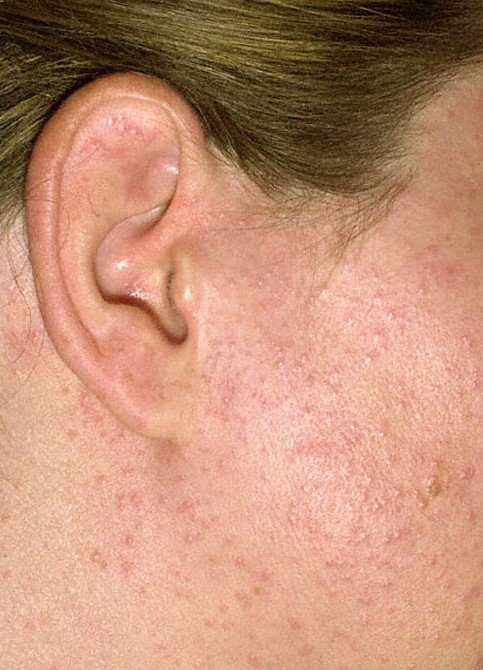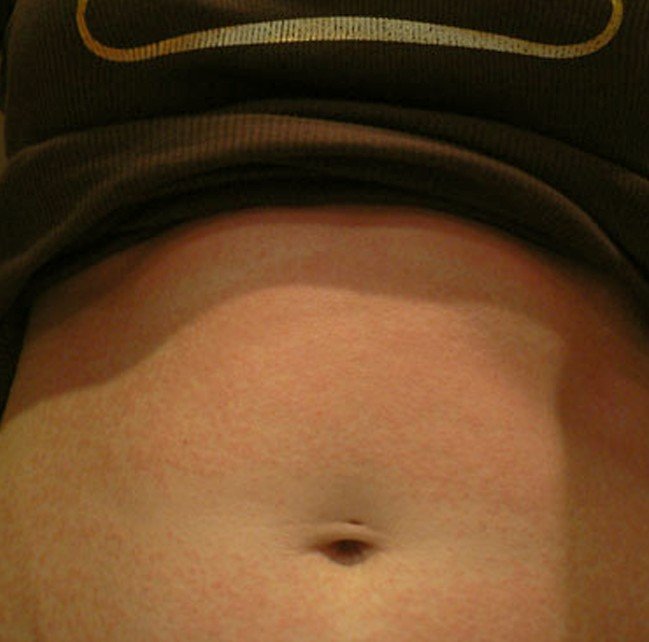Sun Poisoning Rash
What is Sun Poisoning Rash?
Medically termed as photodermatitis, sun poisoning or photoallergy is one of the types of allergic contact dermatitis in which, in order to set off the sensitization of the allergic response and produce systemic effects, the allergens need activation by the sun. Other term designated to this condition is severe sunburn. Skin is inflamed due to excessive exposure to ultraviolet radiation. Children are at moderately high risk of developing photodermatitis in contrast to adults. At present, this is a common medical problem which poses risk of developing chronic and permanent damage such as skin cancer.
This problem can be categorized under acute photodermatitis and chronic photodermatitis. Its presentation differs in each individual as manifestations will largely depend on a multitude of factors such as the sensitivity of a person’s skin, the time the skin was exposed and the length of exposure to the rays of the sun. Every so often, factors such as the location and the altitude of ultraviolet exposure contribute a major role in the development of the rash. In addition, drugs which are given to an individual particularly those that are sun-sensitizing have been documented to intensify an individual’s risk.
Affected individuals usually develop a skin rash which can be itchy. Swelling and redness are noted on skin areas that are sun-exposed. Hyperpigmented lesions are similar to lesions in eczema. Patient may also complain of hyperthermia, headache, pain and nausea.
Establishing a diagnosis is somewhat simple. The characteristics of its clinical presentation make it possible to arrive in a conclusion through plain physical assessment. Most of its physical manifestations are evident on the skin and even advanced complications such as dehydration can be directly observed. Still, consulting a doctor is necessary to establish an exact sun poisoning rash diagnosis and to be certain that the rashes are not caused by any other conditions. Also, there are diagnostic examinations which can be utilized such as photo patch testing to classify allergens which may worsen an individual’s sensitivity to light and immunofluorescence to disqualify SLE as the immunologic origin of the skin condition.
In spite of the ill effects of UV light, everyone should also be aware of the importance of ultraviolet rays in the production and activation of Vitamin D on the skin. That’s why, it is still recommended to have short duration of sun exposure on condition that the body of the individual is capable to make adjustments.
Causes
- The primary etiology in the development of sun poisoning rash is lengthened exposure to sun’s ultraviolet rays (UV exposure for thirty minutes to several hours). Rays are grouped according to its wavelength; greater wavelength means bigger chance of getting severe sunburn. A wavelength of about 290 to 400 nm are considered to be extremely unfavorable to human skin.
- There are three types of ultraviolet radiation, namely, UVA, UVB and UVC; but only UVA and UVB can penetrate the earth’s atmosphere and move to the earth’s surface. Both are wavelengths which exist logically in the light spectrum. Both are also recognized for bringing about photoaging; such as the surfacing of wrinkles on the skin. On the other hand, from the two types, exposure to the latter is regarded as more damaging and is largely the reason for most of the skin cancer cases.
- These rays are known to react with melanin, a natural chemical of the cutaneous layers. As the first line of skin defense against, melanin takes in the ultraviolet rays to prevent injury to the skin. The condition begins when the injury goes beyond the level of protection the melanin can provide. Continued absorption of these harmful rays can lead to the production of singlet oxygen and other free radicals resulting to cellular damage.
- Tanning beds also emit ultraviolet rays in slight concentration.
- People who inhabit near the equator are likely to develop sun poisoning rash than any other groups who settle in a place far from the equator. On top of it, those who dwell in high altitude places are potential to get the condition.
- Persons who have fair complexion have been noted to develop the condition even with just a brief exposure to the sun as their skin lack the wanted pigmentation to combat the destructive ultraviolet radiation.
- There are specific drugs which increase skin sensitivity due to their direct toxic effects. Along these lines, an individual’s susceptibility to ultraviolet rays increases. These medications include anti-diabetic drugs, birth control pills, antihypertensive medications, thiazide diuretics, tranquilizers, coal tar derivatives, chemotherapeutic agents, anti-malarial drugs and tetracycline.
- Harsh chemicals in cosmetic products like soaps, detergents, shampoos, suntan lotions and etc can contribute in the development of sun rash.
- Immunologic conditions like systemic lupus erythematosus can also generate sun poisoning rash.
Treatment
Preventive measures include;
- Avoid direct exposure to the rays of the sun, particularly throughout the brightest hours, from 10 in the morning to 4 pm.
- Wear protective clothing every time you need to go out under the sun and cruel and prolonged exposure is likely. Cover up by wearing long sleeves, long pants and using an umbrella and wide-brimmed hat. Cloudy skies do not secure protection from ultraviolet rays as it can pass through.
- Stay away from chemicals which may elicit an allergic reaction. On the other hand, never discontinue a medication without seeking an advice from a doctor.
- Apply liberal amounts of broad spectrum sunscreen lotions with no less than spf 30 plus a high protection level from ultraviolet light. When swimming, at least 1 oz. of lotion is applied every 2 hours.
- Consume foods which are high in antioxidants to gain much protection against skin cancer. Some of the food items which are rich sources of antioxidants are green tea, apple, soy, broccoli, tomatoes, carrots, cranberries and spinach.
Majority of the treatments for sun poisoning rash have not been medically established to accelerate the healing process and reverse the injury by severe sunburn; nevertheless, most of these methods can relieve the severity of symptoms.
- To reduce inflammation brought by the sun poisoning rash, several nonsteroidal anti-inflammatory medications including ibuprofen can be given orally. These drugs are advised to be taken the moment the person is exposed to ultraviolet radiation for a longer time.
- Even if clinically unverified, topical anesthetics including benzocaine warrant fair success in controlling the effects of its symptoms.
- If weepy eruptions occur, cool, wet dressings must be applied to the area.
- To manage these eruptions, glucocorticoids can be administered not longer than 7 days.
Home Remedies
- At home, natural remedies such as the application of aloe vera gel can be tried. Its gelatinous emollient extract can be helpful in managing the sun poisoning rash as this has properties that can soothe, moisturize and heal.
- A solution of baking soda can be applied all over the affected skin areas to reduce pain and inflammation for the time being.
- Calamine lotion is frequently used to help lessen itchiness related to photodermatitis. Following a cool shower, the lotion can be scattered evenly all over the affected area.
- The body can also be soaked in a bath tub filled with cool water, corn starch and oatmeal to ease the irritation.
Sun Poisoning Rash Pictures
© hardinmd.lib.uiowa.edu
© hardinmd.lib.uiowa.edu
© flickr.com
Leave a Reply
You must be logged in to post a comment.


